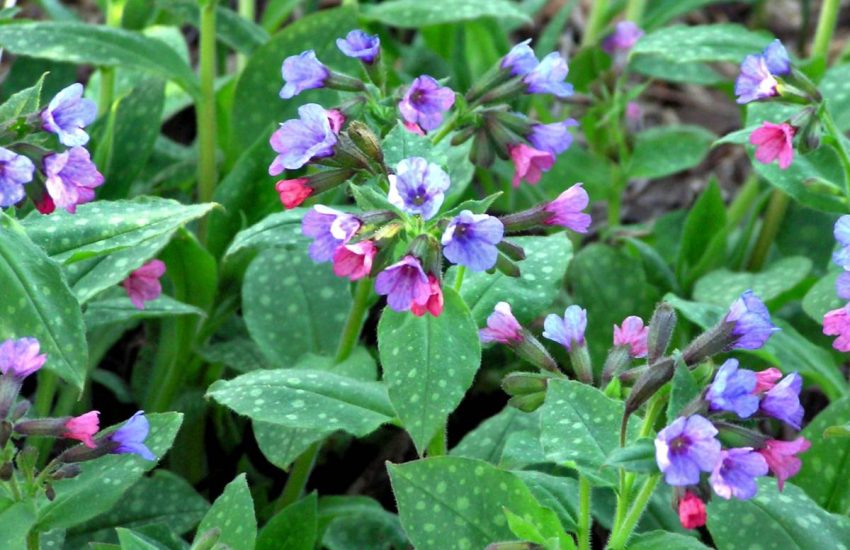Amsonia Flowers: Characteristics and Growing Tips
Amsonia flowers, also known as blue stars, are a popular choice for gardeners looking to add a touch of blue to their landscapes. These perennials are native to North America and are known for their delicate, star-shaped flowers that bloom in the spring and summer months.

One of the reasons why amsonia flowers are so popular is because they are easy to care for and require very little maintenance. They can grow in a variety of soil types and are tolerant of both drought and wet conditions. Additionally, they are resistant to most pests and diseases, making them a great choice for gardeners who want to avoid using pesticides.
Despite their hardiness, amsonia flowers are also prized for their beauty. Their delicate blue flowers are a welcome sight in any garden, and they can be used to create stunning borders or as a focal point in a flower bed. With their combination of beauty and ease of care, it’s no wonder why amsonia flowers are a favorite among gardeners.
Cultivation and Care
Planting and Soil Requirements
Amsonia plants prefer to be planted in well-draining soil with a pH range of 5.0 to 7.5. They thrive in full sun but can tolerate partial shade. Before planting, gardeners should prepare the soil by adding compost or other organic matter to improve the soil structure and fertility. When planting, it’s important to ensure that the top of the root ball is level with the soil surface.
Maintenance and Pruning
Amsonia plants require minimal maintenance. Deadheading spent flowers can encourage new blooms. In the fall, gardeners should cut back the stems to the ground to encourage new growth in the spring. Pruning should be done sparingly to maintain the plant’s natural shape.
Propagation Methods
Amsonia plants can be propagated through division or seeds. Division should be done in the spring or fall, and the root ball should be carefully separated into smaller sections. Seeds should be stratified for several weeks before planting in the spring. Once the seeds have germinated, they can be transplanted into containers or the garden.
Overall, amsonia plants are easy to grow and care for, making them a great addition to any garden. With proper soil preparation, watering, and maintenance, gardeners can enjoy the beautiful blue flowers of the amsonia plant for years to come.
Varieties and Landscape Use
Common Species and Their Traits
Amsonia is a genus of flowering plants that are native to North America. The most commonly cultivated species of Amsonia are Amsonia tabernaemontana and Amsonia hubrichtii. Both species have star-shaped, pale blue flowers that bloom in the spring and attract butterflies and other pollinators. They are also deer resistant and drought tolerant, making them ideal for gardens and landscapes.
Amsonia tabernaemontana, also known as blue star, can grow up to 3 feet in height and has a medium texture. Its leaves are narrow and lance-shaped, and its fall foliage is a beautiful golden yellow. This species is commonly used in borders, beds, and mixed gardens.
Amsonia hubrichtii, or threadleaf blue star, is a taller and more delicate species. It can grow up to 4 feet in height and has a fine texture. Its leaves are thin and thread-like, and its fall foliage is a stunning bright yellow. This species is often used as a specimen plant or in mass plantings.
Design Considerations for Gardens
When designing a garden with Amsonia, it is important to consider the space and texture of the plant. Amsonia tabernaemontana is ideal for filling in borders and beds, while Amsonia hubrichtii can be used as a focal point or in mass plantings. Both species have attractive foliage, so they can be used to add interest to a garden even when they are not in bloom.
Amsonia prefers well-drained soil and full sun to partial shade. It is important to give the plant enough space to grow, as overcrowding can lead to disease and poor growth. Amsonia is also toxic if ingested, so it should be planted away from areas where children and pets play.
Overall, Amsonia is a beautiful and versatile plant that can add color and texture to any garden or landscape. Its attractive foliage, star-shaped blue flowers, and ability to attract pollinators make it a popular choice among gardeners.


